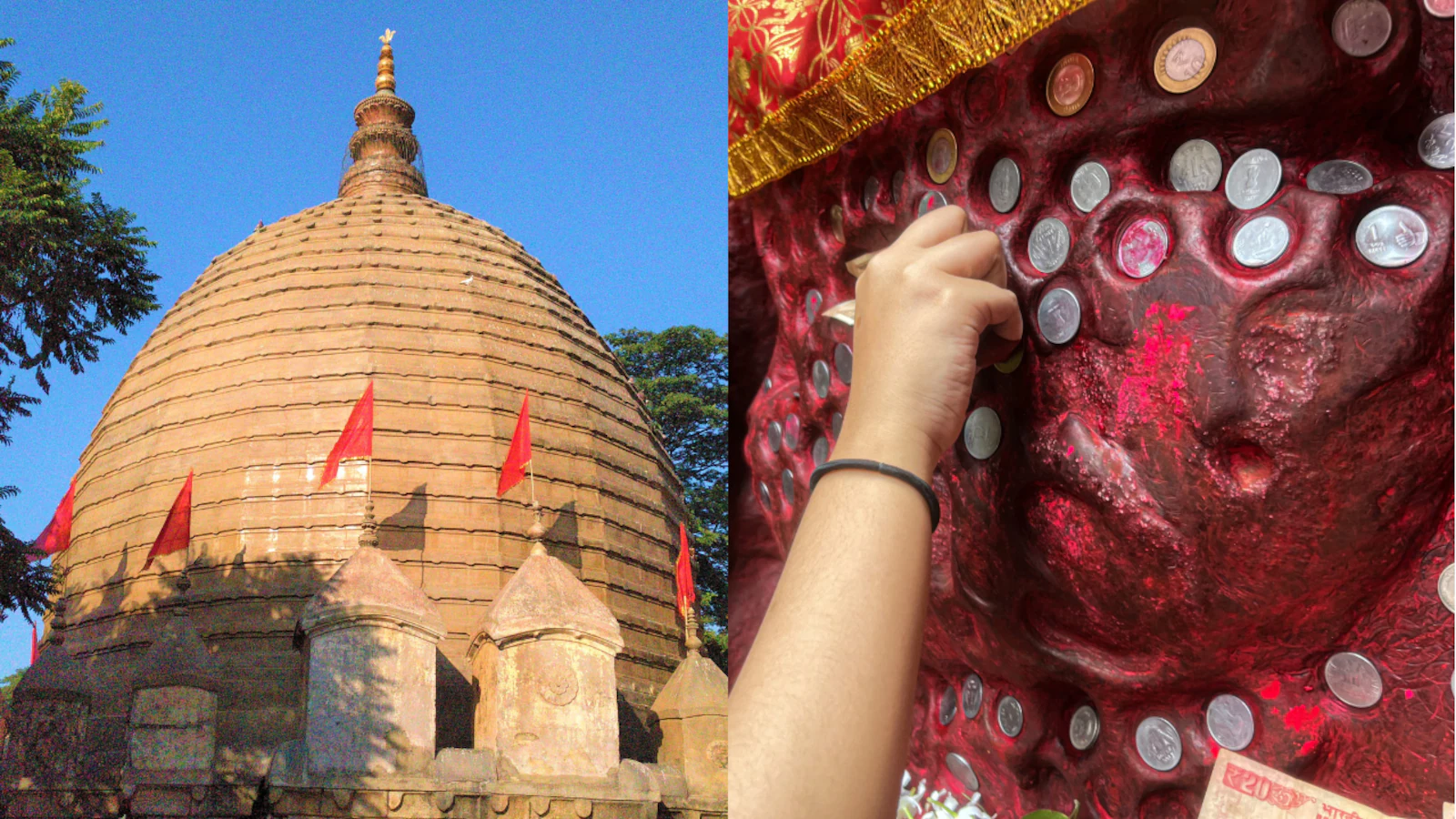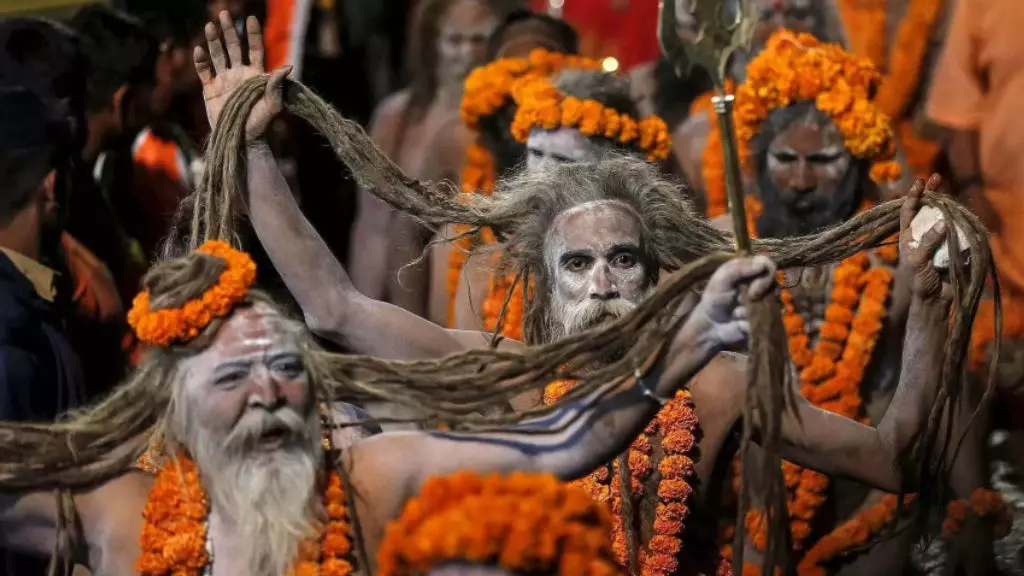Atop the Nilachal Hills in Guwahati, is situated the Kamakhya Temple. It is one of the most enigmatic and powerful shrines in India. Unlike any other temple in the subcontinent, Kamakhya doesn’t house a traditional idol. Instead, devotees bow before a rock crevice, believed to be the yoni, the female genital symbol, of Goddess Kamakhya, soaked in mysticism, reverence, and a power that continues to baffle devotees and scholars alike.
What makes this temple particularly unique is that every year, the goddess is believed to menstruate. And this natural, biological process, often seen as taboo in many parts of the world, is here worshipped as sacred, divine, and life-giving.
The Mythology behind Kamakhya Temple
According to Hindu mythology, the Shakti Peethas were formed from the tragic tale of Goddess Sati (an earlier incarnation of Parvati), who immolated herself in protest against her father Daksha’s insult to her husband, Lord Shiva. Devastated and enraged, Shiva lifted her lifeless body and wandered across the cosmos, performing the grief-stricken Tandava, a dance of destruction.
To prevent the universe from descending into chaos, Lord Vishnu used his Sudarshan Chakra to cut Sati’s body into pieces, which then fell at various places on Earth. These sacred sites became known as Shakti Peethas, each representing a body part of the goddess. At Kamakhya in Assam, it is believed that Sati’s yoni (womb or genital organ) fell, making it one of the most powerful Shakti Peethas, symbolizing the primordial creative force and feminine energy of the universe.

Why Does the Goddess Bleed?
The Ambubachi Mela, held annually in June, marks the ritualistic menstruation of Goddess Kamakhya, the embodiment of feminine creative power. For three to four days, the temple doors remain shut to the public. Priests say this is the period when the goddess rests, undergoing her annual menstrual cycle.
During this time, no pujas or rituals are performed, and even the soil and water in and around the temple are believed to turn red, symbolizing menstruation. A red cloth (Rakta Bastra) is placed over the yoni stone in the sanctum. This cloth, once removed, is distributed to devotees as prasad, believed to possess miraculous healing powers.
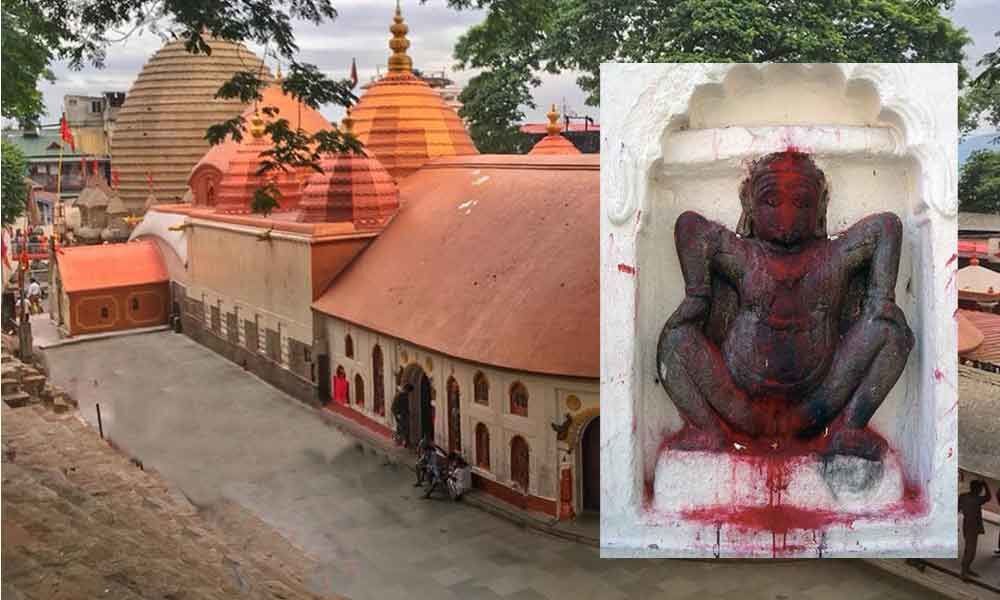
While scientifically there’s no evidence of any natural blood flow from the rock, the belief is so deeply rooted that faith takes precedence over logic in the eyes of the worshippers.
The Power and Mystery of the Yoni
The sanctum sanctorum of Kamakhya does not have a deity in human form. Instead, it houses a natural rock formation shaped like a vulva, constantly moistened by a subterranean spring. This yoni-shaped crevice is considered the spot where Goddess Sati’s womb or genitals fell, according to Hindu mythology.
This is what makes Kamakhya one of the most powerful Shakti Peethas, sacred sites representing parts of the goddess’s body that fell when Lord Vishnu dismembered Sati to calm Lord Shiva’s cosmic rage after her self-immolation.
The yoni is the most potent symbol of fertility, creation, and life, and its worship during Ambubachi highlights a worldview where the female body is not something to be hidden, but venerated.
The Tantric Connection
Kamakhya is not just a temple, it is also a major Tantric centre. Here, practices that are considered esoteric or even forbidden in orthodox Hinduism have long flourished.
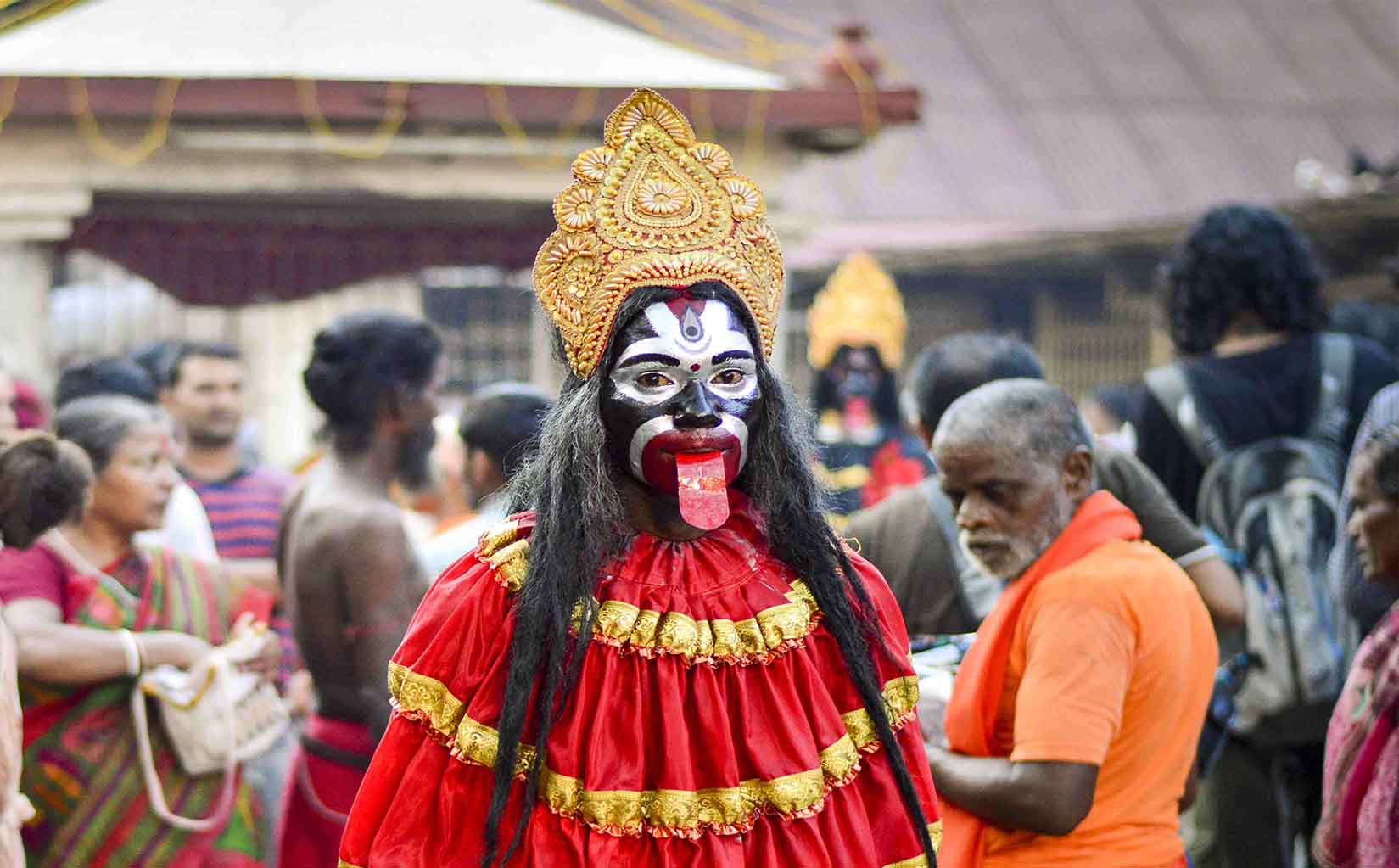
Tantric practitioners believe the temple is a source of raw cosmic energy, ideal for attaining spiritual enlightenment. The belief that menstruation represents the creative force of the universe is central to Tantric philosophy, and Ambubachi is seen as a time when the goddess’s energy is at its peak.
During the festival, Tantric sadhus from across India and Nepal gather at Kamakhya, performing secretive rituals in nearby forests and caves.
Why is the Ambubachi Mela Held?
The Ambubachi Mela is deeply rooted in Tantric Shaktism, and is observed during the monsoon month of June. The temple remains closed for four days, signifying the time when Goddess Kamakhya is believed to undergo her annual menstruation.
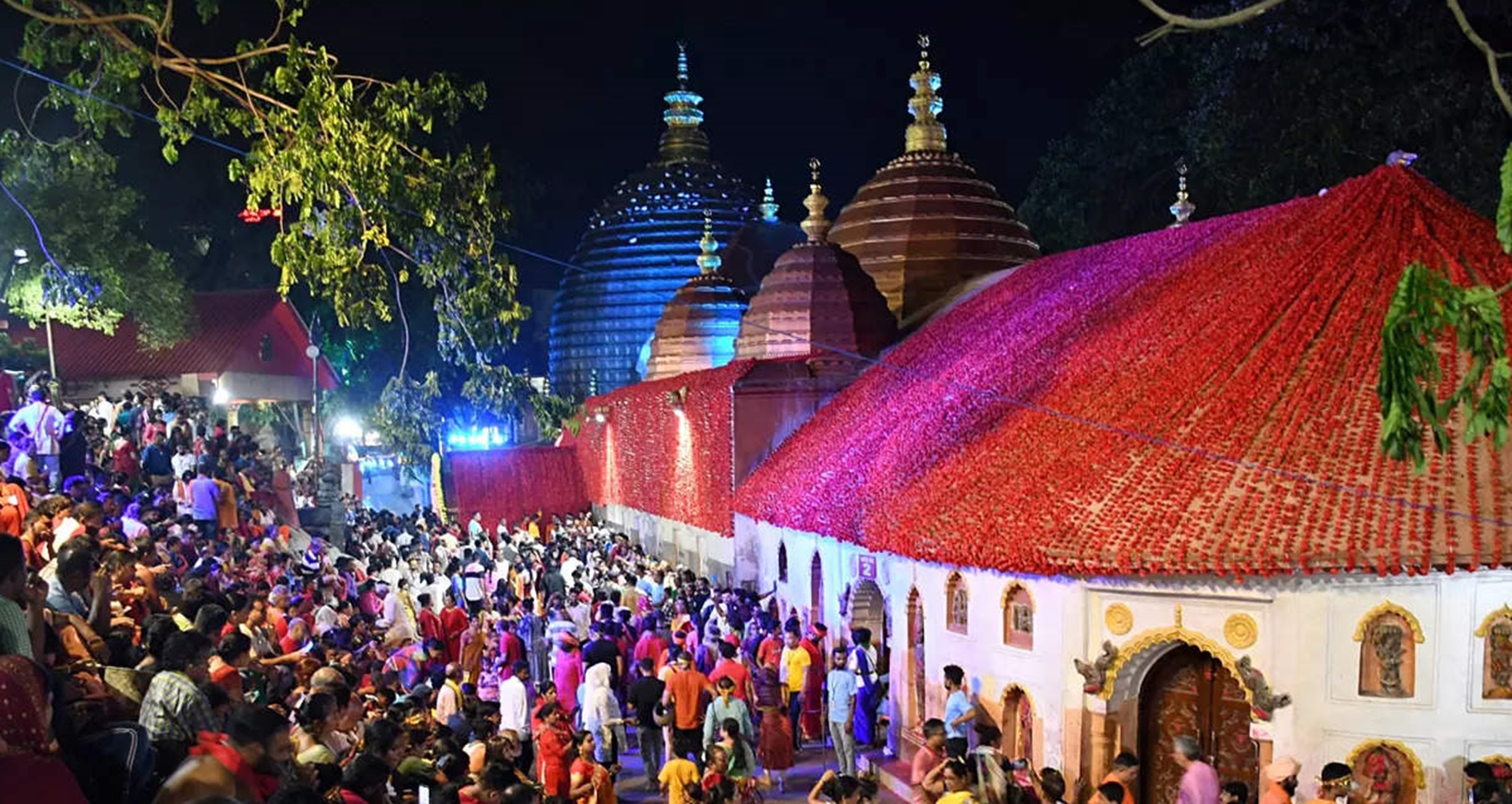
During this sacred time, the main sanctum housing the yoni-shaped stone, symbolizing the goddess’s creative energy and reproductive power, is covered with a red cloth called Rakta Bastra, representing menstrual blood. The temple reopens on the fifth day with elaborate rituals and a massive influx of devotees for darshan.
A Festival That Challenges Menstrual Taboos
What sets Ambubachi apart is its progressive symbolism, a direct celebration of menstruation, fertility, and the divine feminine. In a society where menstruation is often stigmatized, the Kamakhya Temple treats it as sacred, helping reduce shame and taboo, especially in Assam.
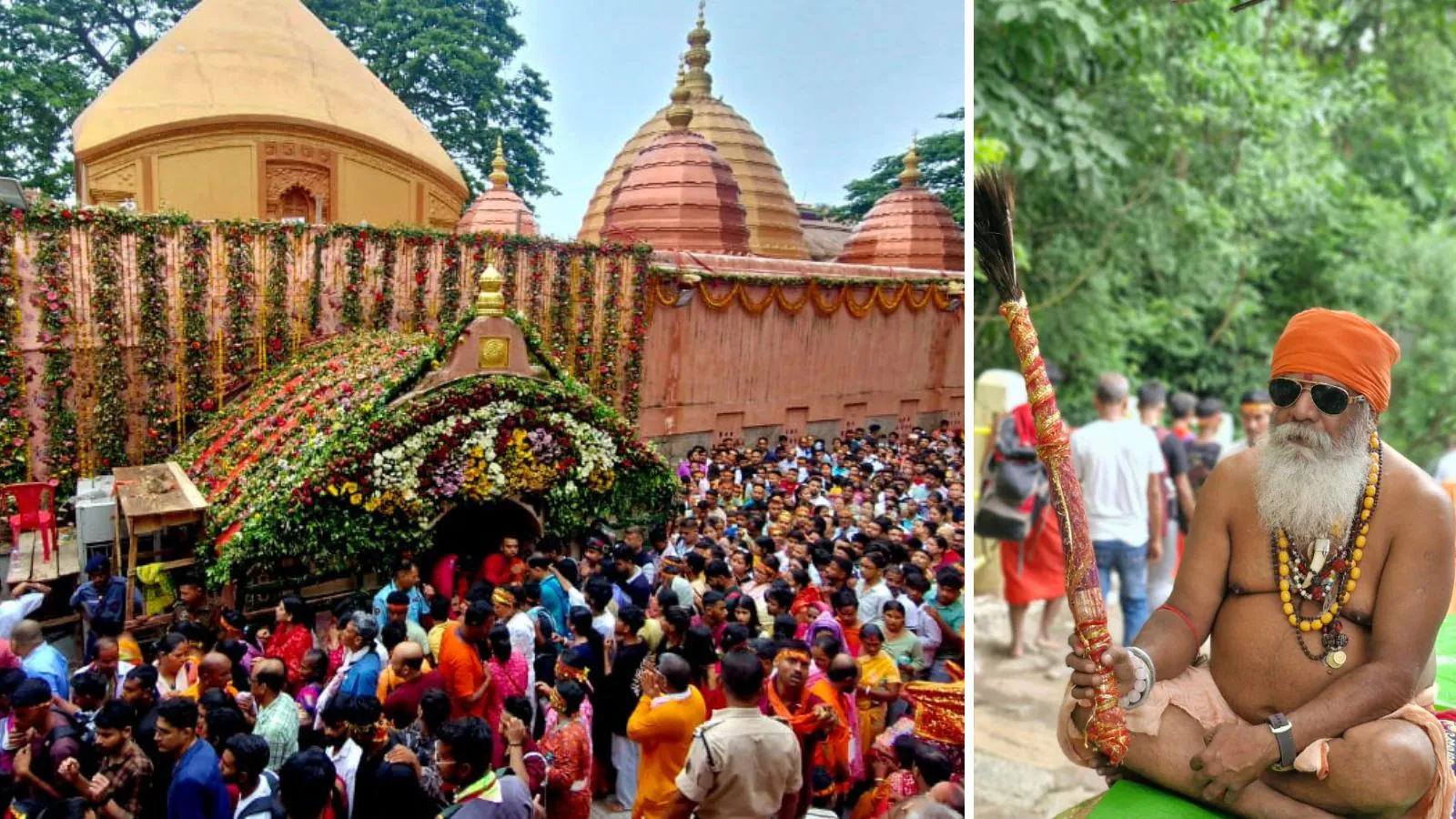
Rituals such as Tuloni Biya, a traditional Assamese ceremony celebrating a girl’s attainment of puberty, draw from the same reverence. The Ambubachi Mela also acts as a platform for promoting menstrual hygiene awareness, with government and local bodies distributing sanitary products and running awareness campaigns during the festival.
Massive Turnout and Government Involvement
Despite strict restrictions during the closure period, no VIP or VVIP movements were allowed, thousands of sadhus, Tantric practitioners, pilgrims, and tourists gathered around the temple premises. On June 26, the temple reopened at 6 AM, marking the end of the Mahayog Nibritti.
Assam Chief Minister Himanta Biswa Sarma extended his greetings on the occasion, stating on X (formerly Twitter): “As the doors of Maa Kamakhya open… I pray to Maa Kamakhya for the welfare of Bharat. May she bless everyone with abundance and steer the civilization forward. Jai Maa Kamakhya.”
As the doors of Maa Kamakhya opens to devotees in Nibritti, which marks the completion of the 4-day #Ambubachi Mahayog, I pray to Maa Kamakhya for the welfare of Bharat 🙏🏼
May Maa Kamakhya bless everyone with abundance and steer the civilisation forward.
जय मां कामाख्या 🙏🏼 pic.twitter.com/B1BhtM8Bg8
— Himanta Biswa Sarma (@himantabiswa) June 26, 2025
The state government made elaborate arrangements for crowd management, hygiene, transportation, and emergency medical care during the mela.
Several legends add layers to Kamakhya’s mystique:
The Legend of Sati and Shiva: The most widely known myth explains how Goddess Sati’s yoni fell here after her self-immolation, making it a sacred site of the feminine divine.
The Curse of Koch Royalty: Local lore claims that King Naranarayana and his brother Chilarai secretly watched the goddess dance. She cursed them, and ever since, Koch royalty has avoided the temple.
The Demon Narakasura: Another tale tells of Narakasura, a demon king, who wished to marry Kamakhya. She agreed on the condition that he build a staircase from the foothills to her temple before dawn. Fearing he’d succeed, the goddess tricked him by strangling a rooster to make it crow early. Enraged, Narakasura was ultimately slain.
Each tale adds not just color but a sense of living mythology, making Kamakhya not just a place of worship, but a spiritual mystery.
Celebrating Menstruation as Divine
In a world where menstruation is often whispered about or hidden, Kamakhya stands boldly as a beacon of feminine power and natural divinity. The temple offers a striking cultural counter-narrative, where a woman’s body is not impure during her period, but divine.
